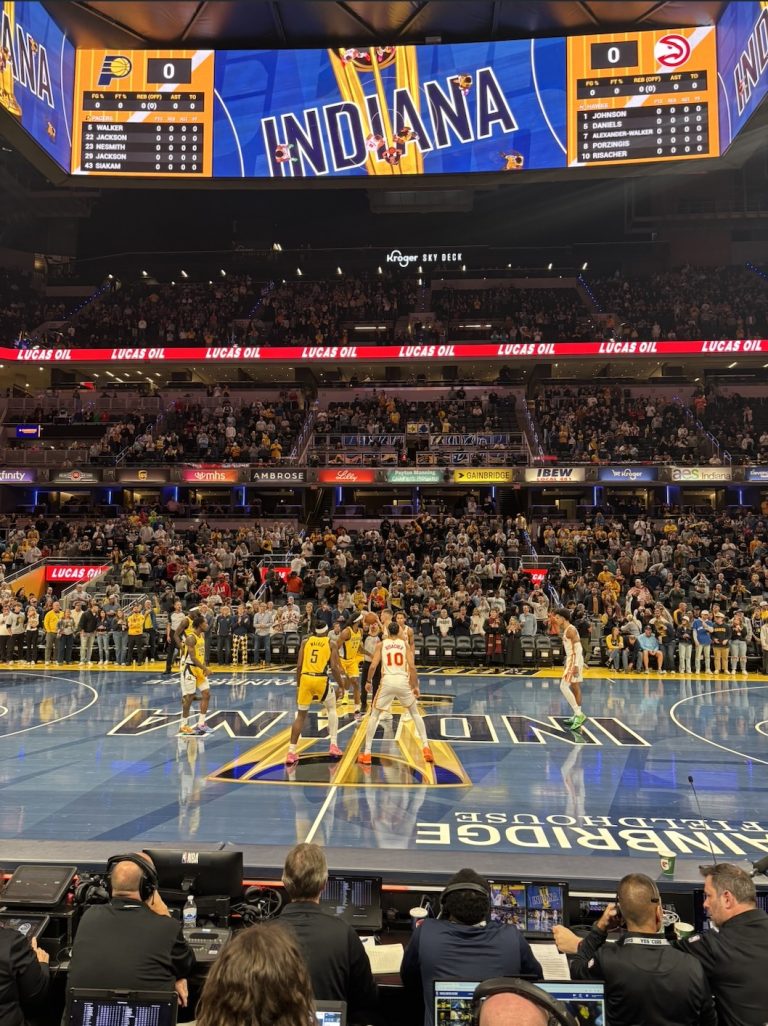With the move of Bellarmine University into Division 1, the University of Indianapolis is going to be stranded in the Eastern time zone in DII, Senior Associate Director for Compliance Scott Young said. According to Young, the rest of the UIndy community should care about not being able to face Bellarmine because of the possible lack of competition within UIndy’s conference. UIndy will continue to evaluate its standing in DII and the Great Lakes Valley Conference and trusts its administration to react accordingly to the school’s needs, Young said.
“[Bellarmine moving to DI] is one of those things, they’re making a decision in the best interest of their institution,” Young said. “I think they have an interest in expanding their recruitment of the general student population, so I think they’re going to use this as an avenue to expand their potential student base. I feel like making that transition to Division 1 is going to allow that, plus going to a conference that has a much larger geographic area.”

Bellarmine has been a long time opponent of UIndy with just this year there being several meetings between the teams according to UIndy Athletics. Young said that he is worried about the conference UIndy is in now.
“Obviously Bellarmine has been a sound member of our conference for many years,” Young said. “I mean our area of concern is that they’re placed within the conference and the quality of the conference we participate in maintaining its standing.”
Vice President for Intercollegiate Athletics Sue Willey said Bellarmine’s transition comes after a decision by their president to try and move from DII to DI, a $1.4 million application fee and being accepted into a DI conference, the Atlantic Sun, which stretches from New Jersey to Florida. Willey’s concern about Bellarmine’s move is that she has seen many schools transition to DI and then they’re just really nobody now. Willey said she feels that this move will be detrimental to Bellarmine’s athletics because their new conference stretches so far that it will take a lot of money to play.
“If you think about taking all of your teas, every sport, to play in Florida or New Jersey, and doing that all year long, it’s going to require maybe more money than what they imagine. But, I think it’s all about prestige,” Willey said. “I wish we had never named the divisions one, two and three because everyone thinks one is the best, and that’s certainly not true. So I think their teams, their coaches and their student athletes are going to have a very difficult time, also because they can’t play for anything, they’re in limbo for the transitional period of four years.”
While Young agrees that it will be a very tough time for their coaches and student athletes because the school cannot compete for championships for four years. While the championships can be why student-athletes participate, that does not drive everyone, Young said. Nevertheless, their opportunities to be successful at the collegiate level are going to be hindered during this transitional time frame Young said.
In terms of losing Bellarmine as a rival in both men’s and women’s basketball, the night games and big rivalry will be no more because of the conference rule that restricts night games from occurring if a school is a certain distance away, Willey said. Pack the House night game will be moved to the afternoon and, according to Willey, the school knows that many people are busy at that time.
Willey said the conference needs to recruit some more schools that are closer to UIndy if the traditional night is to return.
According to Willey and Young, UIndy does not have plans to transition to DI anytime in the near future. The evaluations that the Board of Trustees, higher administration and others make every five to ten years will make the move if the school needs to transition through divisions or conferences, Young said, but Willey said she has always told people that UIndy would need to make $100 million every year to be an average DI school.
“I could never sell out some of our student-athletes for the benefit of others, [by moving to DI],” Willey said. “That’s just not our philosophy.”






